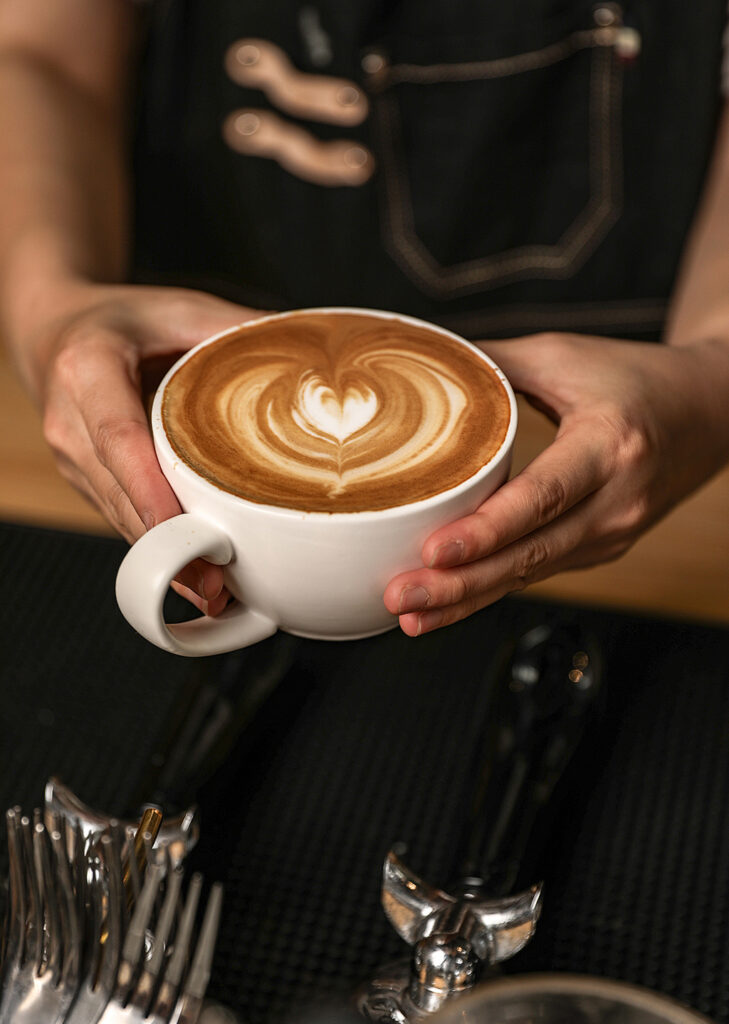As a coffee machine export manager who’s spent years chatting with baristas, roasters, and café owners from Tokyo to Toronto, I’ve learned that coffee isn’t just a drink—it’s a canvas. And nowhere is that more true than in latte art: those delicate, swirling patterns of espresso and steamed milk that turn a morning cup into a mini-masterpiece. Let’s pull back the curtain on why this art form has captured hearts (and Instagram feeds) worldwide, and how it’s shaping the coffee industry today.

What Is Latte Art, Anyway? A Love Letter to Precision
Latte art is the practice of creating designs—think hearts, rosettas, swans, or even complex “tulips”—by pouring steamed milk into a shot of espresso. The magic lies in the contrast: the bold, dark espresso acts as a backdrop, while the velvety, white milk (steamed to a microfoam consistency) forms intricate patterns. It’s part science, part skill. Get the milk temperature wrong (too hot, and you scorch the espresso; too cold, and the foam collapses), and your swan becomes a blob. Nail it, and you’ve got a drink that’s as Instagrammable as it is delicious.
But latte art isn’t new. Its roots trace back to 1980s Italy, where baristas like Luigi Lupi (often called the “godfather of latte art”) began experimenting with milk foam. By the 2000s, it spread globally, fueled by third-wave coffee culture—where quality, presentation, and storytelling matter as much as taste. Today, it’s not just for hipster cafés: even chain brands like Starbucks have embraced it, training baristas to master the basics.
Why Latte Art Matters: More Than Just a Pretty Picture
Consumers don’t just want a caffeine fix—they want an experience. A well-poured latte art cup is a sensory delight: the aroma of fresh espresso, the warmth of the ceramic cup, and the visual thrill of a perfectly symmetrical heart. It turns a routine coffee run into a moment of joy.
For café owners, it’s a competitive edge. In a crowded market, a barista who can craft a rosetta that “sings” (with layers of texture and depth) can turn first-time customers into regulars. I once visited a small café in Melbourne where the owner, a former competition barista, told me, “People come in just to watch me work. They’ll pay $6 for a latte because they know it’s not just milk and coffee—it’s art.”
Even businesses outside cafés are hopping on the bandwagon. Cafeteria chains in Japan now offer latte art workshops for kids, turning coffee into a family activity. In South Korea, café franchises use latte art as part of their brand identity—think pastel-colored unicorns or K-pop character designs—to attract younger crowds.
Global Flavors: How Latte Art Adapts to Local Tastes
Latte art isn’t one-size-fits-all. Its popularity varies by region, shaped by culture, caffeine habits, and even social media trends. Here’s what I’ve observed in my travels:
- Europe: Tradition with a Twist
In Italy, where espresso is a daily ritual, latte art is often kept simple—clean hearts or rosettas—so as not to distract from the espresso’s bold flavor. But in cities like Berlin or London, hip cafés go wild: I’ve seen geometric patterns, seasonal designs (pumpkins in fall, hearts in February), even “coffee art” that tells a story (a tiny café scene with a barista and a cat). sustainability is a big theme here too: some cafés use plant-based milks (oat, almond) for latte art, appealing to eco-conscious drinkers. - North America: Bold, Creative, and Social
Americans love their lattes big and bold. In New York, you’ll find cafés offering “giant latte art” (think 20-ounce cups with sprawling designs), while in Los Angeles, matcha lattes (with vibrant green art) are all the rage. Social media has been a game-changer: baristas compete on Instagram, posting close-ups of their art with hashtags like #LatteArtMagic. Brands like Blue Bottle Coffee even host “latte art battles” to engage customers. - Asia: Precision, Pop Culture, and Innovation
Asia’s coffee scene is booming, and latte art is a star player. In Japan, where precision is valued, baristas focus on intricate, symmetrical designs—cherry blossoms, dragons, or even tiny “sumi-e” ink paintings. South Korea leans into K-pop and anime: I once saw a latte art of BTS’s Jungkook at a café in Seoul, which went viral on local apps. China’s younger generation, too, is obsessed: brands like Luckin Coffee offer “custom latte art” where you can choose your design (hello, zodiac signs or favorite emojis) for an extra fee.
The Future: Tech Meets Tradition
Where is latte art headed? Innovators are blending old-school skills with new tech. For example, “automated latte art machines” now exist—they use algorithms to pour milk in precise patterns—but most baristas I’ve talked to scoff at them. “Machine-made art is clean, but it lacks soul,” one Parisian barista told me. “The best latte art has a little imperfection—like a wobbly edge on a heart. That’s what makes it human.”
Still, tech is enhancing the craft. Apps like Latte Art Generator let baristas sketch designs on their phones, then project them onto the cup as a guide. And smart coffee machines (like some of Sheen’s models!) now have built-in milk frothers with adjustable steam pressures, making it easier for beginners to practice.
Closing Thoughts: Coffee as Art, and Connection
At the end of the day, latte art is about more than milk and espresso. It’s about connection—between the barista and the customer, between tradition and innovation, between a daily routine and a moment of beauty.
Whether you’re a café owner looking to elevate your menu, a coffee enthusiast wanting to learn the basics, or a business exploring new trends, latte art is a trend that’s here to stay.
Stay grounded in the grind, and keep reaching for that perfect pour.
Welcome to Sheen’s Blog, where we explore the art and science of coffee—from bean to cup, and beyond. Ready to upgrade your café’s latte game with top-tier coffee machines? Reach out—we’ve got the tools, tips, and trade secrets to help your business brew success. ☕️🎨

